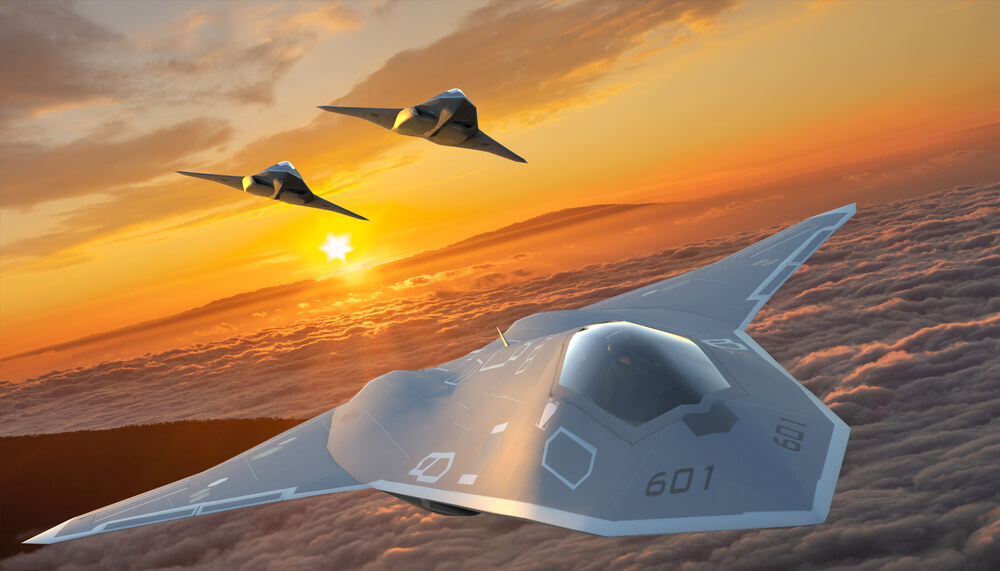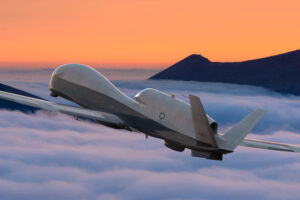America has something China doesn’t: the world’s most advanced fighter plane engines.
Unfortunately, the U.S. Air Force is teetering on the edge of losing that precious lead, by delaying or restructuring its secretive Next Generation Air Dominance, or NGAD fighter.
Next Generation Air Dominance is a family of systems that includes weapons, drones and a manned fighter. The Air Force had planned to choose a winner this year for the manned fighter portion of NGAD, but in June comments from Secretary of the Air Force Frank Kendall and Air Force Chief of Staff Gen. David Allvin put that in doubt. Kendall said the Air Force is reevaluating that plan due to budget concerns, which could impact either the contract award or delay future funding, depending on what he decides.
Airpower is nothing without propulsion. So, alongside the new fighter plane the Air Force also has two advanced engine projects. The XA100, made by GE Aerospace, and XA101, made by Pratt & Whitney of RTX, are highly advanced, adaptive cycle engines with unique abilities. The Air Force has been funding them in a long-term development program, dating back over a decade.
“We are making one design that will … fit into any of the [airframe] design. for NGAD, explained John Sneden, director of the Air Force’s propulsion directorate, last year. The program was proceeding so well that in April 2024 the Air Force requested $1.3 billion to continue “adaptive prototyping planning, detailed design, engine fabrication and engine assessments” on the way to fielding in 2030.
But now, as part of the NGAD upheaval, Kendall has hinted he wants a smaller and cheaper engine. “What we’re looking for is the most cost-effective propulsion system for the platform,” he said on July 1. According to Kendall, the Air Force wants to “reduce the complexity, but also the size of the engine.”
U.S. stands to lose its engine preeminence
If the Air Force sends the NGAD fighter into a death spiral and also pursues a different engine, the U.S. lead in advanced engines goes with it. Here’s why that would be a big loss.
First, the adaptive engine technology at the heart of the program represents a major leap in combat capability. Fixed-cycle jet engines operating today are designed either for fuel efficiency or for high thrust for military planes; the adaptive cycle engine can switch between the two modes.
This type of advanced engine in a next-generation fighter would greatly extend combat radius, time on station and electric power and cooling available for sensors and weapons.
By adding a third stream of air, the engine can achieve an efficient cruise mode that saves fuel and extends range. In combat, the engine can produce bursts of supersonic speed. A fighter or bomber with adaptive engines could fly a segment at reduced thrust and save fuel to extend range. Then, when over the target area, the adaptive engines can switch to supersonic cruise, getting the aircraft into the target and back out of danger faster. Higher speed also enhances weapons release effects such as range, maneuvering, and rate of closure to target.
Concern about the engine industrial base
Second, doing away with the NGAD plane risks damage to the engine industrial base. The adaptive cycle engine is the culmination of a long-planned technology refresh. The ancestry of the Air Force’s current advanced engine family dates back over 30 years, when the Pratt & Whitney F119 engine was selected for the F-22 fighter after a 1990 fly-off. The production F119 later became the basis for the F135 engine for the F-35 joint strike fighter. The F119 and F135 have no peers.
The Air Force has been pursuing adaptive cycle engines for quite some time.
The Air Force began funding advanced, classified research by top engine makers including Pratt and Whitney, GE Aerospace and Rolls Royce back in 2007. Then in 2012, the Air Force made a formal $213.6 million investment in an adaptive cycle engine with the goal of developing a variable cycle propulsion system to achieve a 25 percent or greater specific fuel consumption reduction.
The program progressed, with a few name changes, and in 2022 the Air Force awarded five $975 million contracts for advanced engine development to General Electric of Cincinnati, Ohio; Pratt & Whitney of East Hartford, Connecticut; Boeing of St. Louis, Missouri; Lockheed Martin of Palmdale, California; and Northrop Grumman of Palmdale, California.
The contracts were valid until 2032 and appeared to include a range of engine and airframe testing and integration activities. At the time, Kendall said it was “important to keep a viable, competitive market for military engines, and find ways to keep multiple companies in that market so they can push technology forward.”
Quite right.
China is getting better at making jet engines
Third, a delay might allow the Chinese to catch up. It took decades of investment to keep America’s engine makers well ahead of Russia and China. Kendall has already expressed misgivings about his decision last year not to pursue the advanced engine as an upgrade option for the F-35.
He softened the blow by confirming the engines were still in development for the NGAD plane. Yet when asked by a reporter about his top regret after the Air Force’s final budget decisions, Kendall cited his engine decision. “I worry a little bit about that,” he told reporters in March 2023.
No wonder. On June 28, 2023, the Chinese released footage of their top J-20 fighter flying with a pair of new Chinese-made WS-15 engines. Previously, the Chinese relied on Russian engines or their own, unsatisfactory WS-10 engine. The Chinese success was disturbing.
“No one wants the Chinese to become capable of designing and building their own jet engines,” a former NATO-nation intelligence officer told Breaking Defense at the time. “It would move the threat marker as to their air power capability up more than just a couple of notches. But they seem to be close to that goal whether we want them to be or not.”
For now, the new Chinese engines are likely far behind the XA100 and XA101. The new engines developed by GE Aerospace and Pratt & Whitney look set to continue America’s traditional lead. That door closes if the Air Force turns away from the NGAD plane and strands advanced engines without a path forward.







